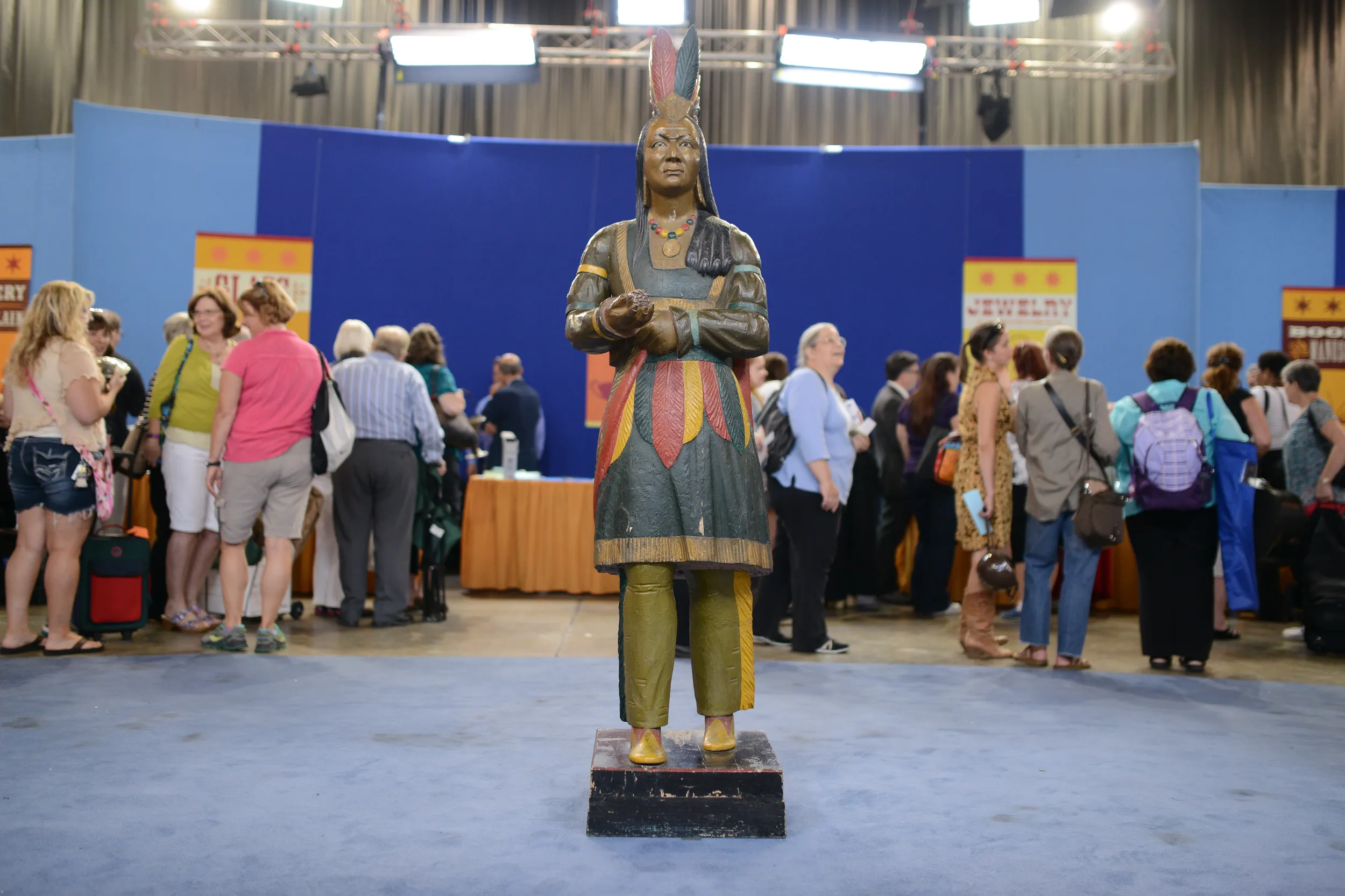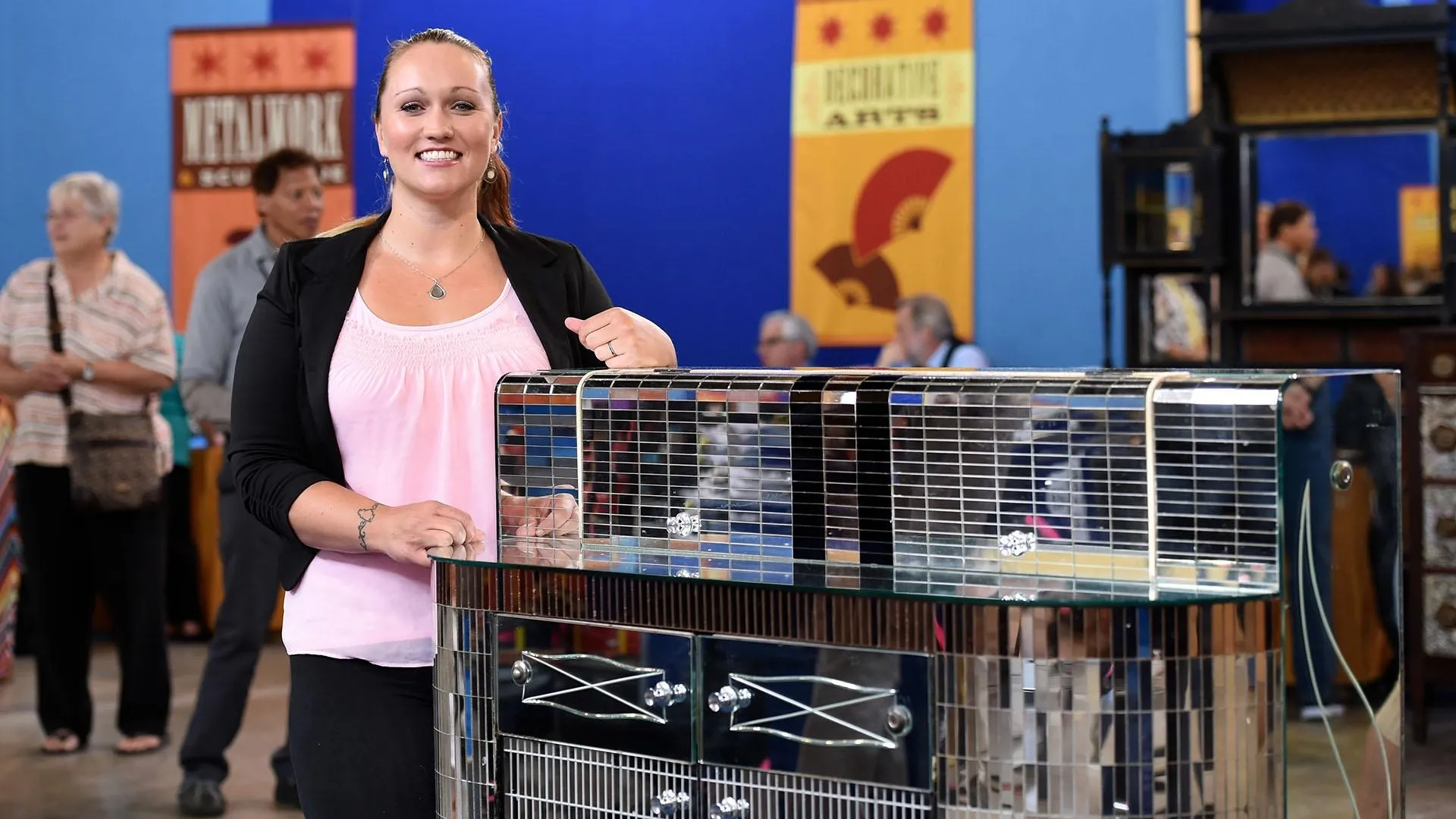GUEST: I have an original cigar store Indian. My grandfather, I believe, paid $75 for it in 1938. He procured it from the corners of Milwaukee Avenue and, I believe, Division Street in downtown Chicago. They transported it back to their home and it has been in our family for 74 years.
APPRAISER: Wow. We know the carver's name because of its distinctive style, and it was John Cromwell. And he was one of the first early carvers in New York City. He was a ship carver-- most of them were-- and they morphed into making cigar store figures, tobacco shop figures all throughout New York, and they started shipping them throughout America. The tobacco figure became the figure of the Indian, and the reason for it is the Indians taught the settlers how to raise and plant and harvest tobacco.
GUEST: I see.
APPRAISER: Cromwell has a very distinctive style, and right here, this is a key to assigning a carver's name to it. It's this triangular headdress, and the way it comes to a point. The headdress has a wonderful fan shape to it that goes back to the head, flowing down the shoulders, all very distinctive styles of Cromwell, as well as the bear claw over his shoulder, and the necklace, which what is really the imagery of a peace medal that were given out by the United States government to the great chiefs throughout the Indian nations. So, we do know it's a John Cromwell. He operated in New York City, 1840, 1850, 1860. And it is indeed a rare figure. These full-bodied figures tended to be a little top-heavy, and sadly, this piece did meet that fate of toppling over, and we know that because of the fact that the face is not a John Cromwell face. The face has been at some point in its time, prior to your family's ownership, recarved.
GUEST: Okay.
APPRAISER: When the face was damaged, the arm snapped off. And it was probably the same day that this fell forward, arm snapped off, face was damaged. This entire arm is new.
GUEST: Okay.
APPRAISER: New meaning prior to 1938.
GUEST: Right.
APPRAISER: When you go further down, you see this wonderful skirt with feathers, but then your eye starts to look at the legs, and these legs are a tad short, and Cromwell's figures would have had legs that were about six to eight inches longer.
GUEST: Okay.
APPRAISER: It's a very common story for these cigar store figures that lived out on the streets.
GUEST: Right.
APPRAISER: The paint is old but not original, so the surface we say is pre-1938, which is good, because it was being used up to that point. In terms of valuation, prices have a very wide range, most of it tied to the rareness of the carver and the condition of the piece. So, do you have any idea approximately what your $75 in 1938 is now translating to?
GUEST: I would guess maybe $10,000.
APPRAISER: Okay, it's actually a pretty good guess. I think a retail price would be somewhere in the $10,000 to $15,000 range.
GUEST: Okay.
APPRAISER: One in original paint, beautiful carving, total integrity, can be as much as $700,000.
GUEST: Interesting. He's a great keepsake, and we'll continue to pass it through the family.












